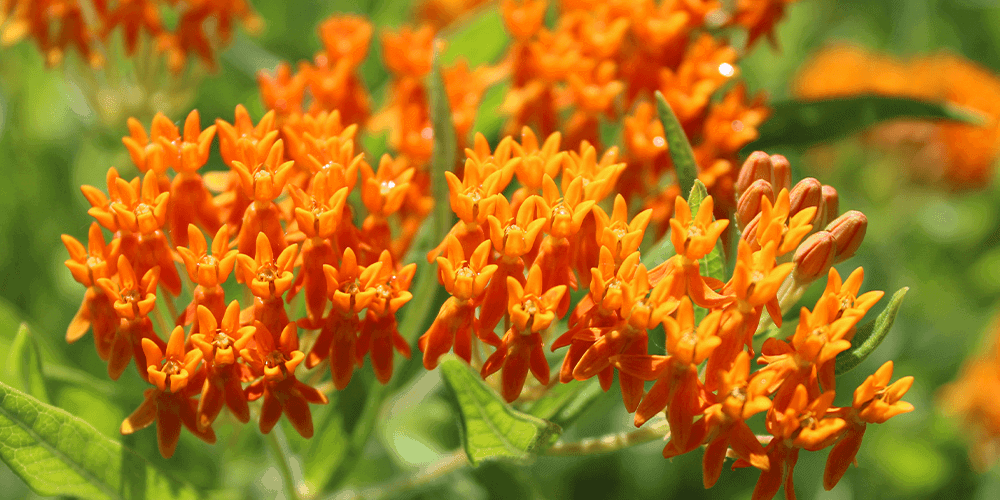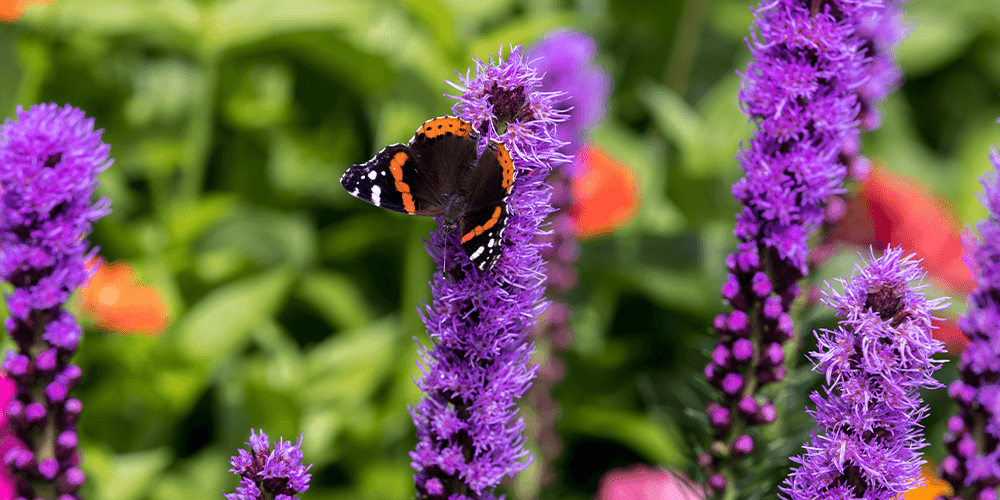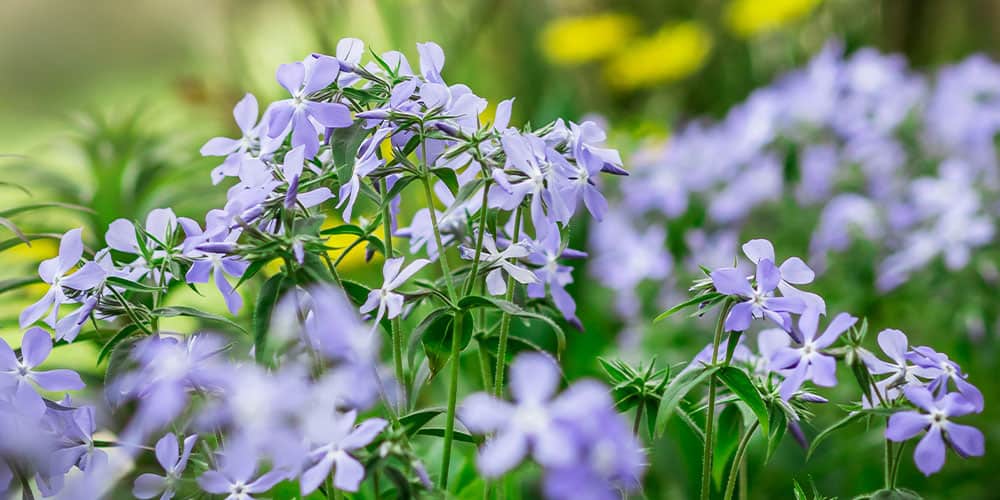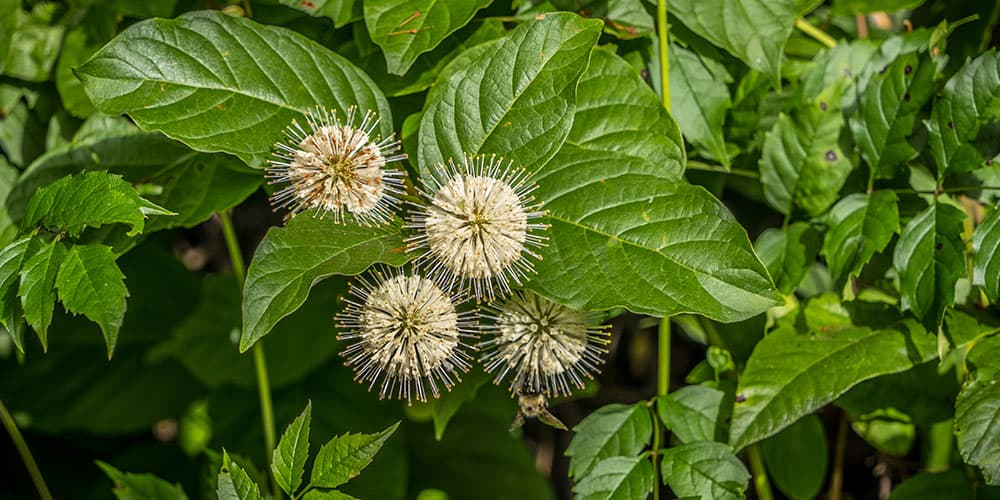Much of our childhood is attached to the scents, smells, and sights of the native plants around us. They’re like old friends who we’ve known our whole lives. We can get to know them even better by growing them in our landscapes.
There are countless benefits to growing native species in your gardens. They’re more resilient to disease and pests and less maintenance, and they provide eco-friendly habitats for native insects and bees and the plants themselves. Here are a few of the many beautiful choices to get you started!
New England Asters
These are one of several native asters that grow in the woodlands of New Hampshire. You’ll recognize them by their vivid fuchsia petals that shine like stars in the undergrowth. They’re late to the scene, blooming in August and September. They feed the butterflies and bring you fresh blossoms just when you thought the summer was coming to a close.
 Butterfly Weed
Butterfly Weed
These bright yellow and orange perennials and their close relatives, milkweed, are highly attractive plants for butterflies. They’re essential for monarch butterflies who migrate from Canada to Mexico every year as the primary food for monarch caterpillars. They bloom generously from early summer to early autumn in the garden and thrive in full sun.
Wild Columbine
Wildflowers don’t have to take up a lot of space to add beauty to your garden. Wild columbines only reach 10″ in height and bloom with nodding red and yellow flowers. They feed the bees, butterflies, and hummingbirds for eight weeks or more in the spring, supporting local ecosystems. They thrive in rock, shade, woodland, and naturalized areas, making them a versatile addition to your landscape.
 Blazing Star
Blazing Star
These essential plants for native wildlife grow in dry woodlands, open meadows, and sand dunes in New England. They display impressive wands of purple flowers in mid-to-late summer. Many native butterflies and moths are attracted to them, especially to the New England Blazing Star, and songbirds eat the seeds in autumn. It’s a feast for pollinators and absolutely gorgeous in your garden!
Native Ferns
The Hay-Scented Fern, the Sweet Fern, the Cinnamon Fern, and the Lady Fern are just some of the many native ferns that you can add to your eco-friendly garden. They each have slightly different fronds and thrive in moist, partial shade. They also provide good coverage for birds that forage on the ground, keeping them safe from predators as they eat. Their rich green leaves are sure to add texture and visual interest to your garden.
 Woodland Phlox
Woodland Phlox
Phlox is a popular garden flower, but not many people know there are native phlox species as well. These violet-blue wildflowers grow in regions from Québec to Florida and bloom in the spring. You can grow them as a compact perennial or ground cover in dappled shade. When you plant the native phlox, you’ll attract more native pollinators, as they have co-evolved with these species.
American Elderberry
This eco-friendly, native shrub is known for its clusters of white flowers in May and dark purple berries that mature in late summer. Elderberries are food for all kinds of native birds throughout the fall and winter. Plus, they are a highly sought-after berry for teas, jams, and any cooked preserves. Make sure to cook them first, as elderberries are toxic to humans when they are raw!
 Buttonbush
Buttonbush
This eco-friendly shrub wins the award for the most intriguing flower. In August, the white globes of nectar-rich filaments bloom profusely, feeding hummingbirds and pollinators. Other birds use the shrub for nesting and feed on the seeds in the fall. Buttonbush grows well in moist soil and reaches a mature height of 4-7 feet, perfect for low line privacy and yard separation.
From less maintenance to an increase in biodiversity and natural pest control, native plants are an excellent option that is eco-friendly, resilient, and just plain beautiful! Follow us on Facebook or Instagram for updates and featured products.


 Blazing Star
Blazing Star Woodland Phlox
Woodland Phlox Buttonbush
Buttonbush